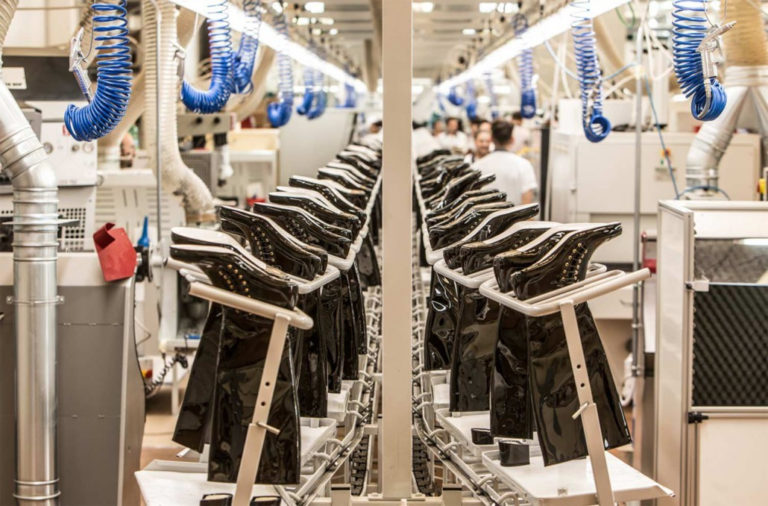Although things improved from the first six months of the year, there are still too many businesses in difficulty: this is what emerged in the third-quarter data analysed by the Confindustra Moda Research Centre for Assocalzaturifici: a double-digit downtrend in revenue (-26.6%) and only 14% of those polled confirm a revenue superior or equal to that of 2019’s third quarter results, while half of those interviewed confirmed a drop in revenue between -20% and -50%. The drop-off from the beginning of the year remained considerable on all fronts as confirmed by Siro Badon, President of Assocalzaturifici: “We have registered decreases in volume of around 20% in domestic sales (-17.8%) and foreign sales (-20.1%), with great losses in industrial production (-29.4%) and an average loss of one-third of their revenue (-33.1%) by member businesses. There are generalised downtrends, almost always double-digit, with the main end markets, while the favourable trade balance has decreased by -18.1%. The first few faint signs of a return to ‘normality’ in demand, both foreign and domestic (in September, exports and purchases by Italian families equalled the volumes of September 2019), are at risk of being immediately cancelled out by the second wave of the pandemic, with significant repercussions on the stability of the sector. There is great concern for the months to come”.
Going more into detail, during the first 9 months of 2020, the domestic market recorded losses in the purchases made by Italian families of -17.8% in quantity and -23% in value, with average prices down by -6.3%, even for the most in-demand items of slippers and shoes for the home – with their lower average price – during the months of quarantine (this segment was damaged the least at -7.4% when compared to classic men’s and women’s shoes, down -30%, and athletic and kids’ shoes, down -15-20%). Accordingly, the boom in online sales did not make up for the losses registered on the market, which were also caused by the drop-off in international tourist numbers, especially for the luxury segment.
Exports, which have always been a driving force for the sector, dropped-off by -20.1% in quantity (corresponding to 32 million fewer pairs compared to the same period in 2019) and by -17.2% in value during the first 9 months of 2020. ISTAT numbers highlight how after the 50% loss recorded during the two-month lockdown period of March-April (-52% in volume) and the unfavourable trend in May-June (-26.5%), although the much hoped for recovery did not occur, the negative trend abated in the three-month period from July to September (-6.5% in volume and -1.5% in value), thanks above all to the month of September, in which the number of pairs exported arrived at the same numbers of September 2019.
As far as the destinations are concerned, Europe is characterised by a downtrend of -16.5% in volume: France, a destination which also accounts for one-third of designer labels, is down by -20%; Germany by -14%, The Netherlands -12%, and Belgium -13.4%. Non-EU destinations decreased by -26% in quantity, with extremely negative results in North America due to the -35% in volume recorded by the USA; while the Far East with its -23.3% is characterised by significant downtrends in all the main markets except South Korea (+16% in value, but -6.8% in number of pairs), which arrives at seventh place in the classification of main destinations for Made in Italy. Likewise negative is the CIS area, with Russia losing -25% in volume and the Middle East at -20.5%. Switzerland, the distributive logistics hub of multinational luxury brands, instead holds steady, thanks to the recovery recorded in the third quarter, while the UK drops-off by -29% in quantity.
These dynamics really strain the stability of the sector, which in 2020 saw the number of active businesses drop by -101 fewer companies during the first 9 months of 2020, with a loss of -2,600 job positions. There has also been a huge demand for unemployment compensation equal to 10.6 million hours, which is a +1267% increase over October 2019.
At the same time, the future of the sector continues to be threatened by the second wave of the pandemic.



